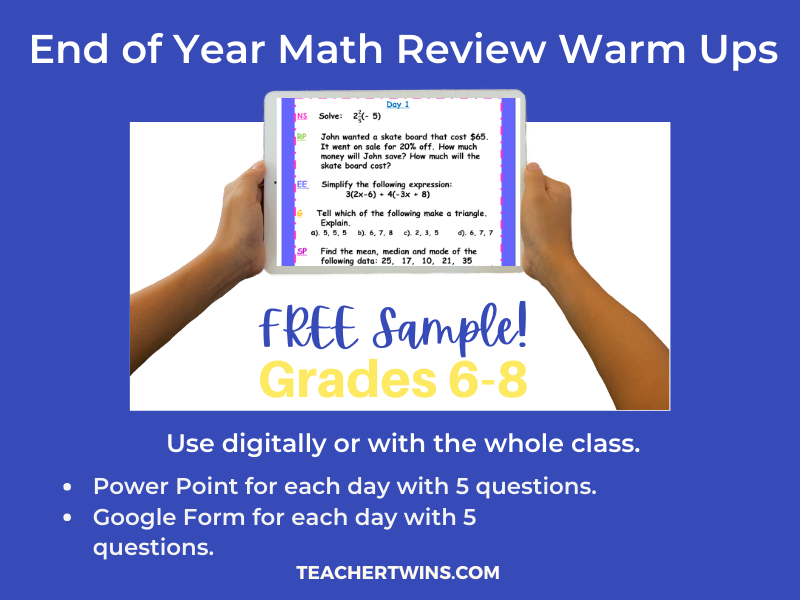Looking for a way to fill gaps in students’ math skills and enhance their learning? Try math warm-ups! This post explains how to use them effectively.
Math warm-ups are an effective way to review foundational math skills and bridge any gaps in understanding. These activities allow students to practice key concepts, increase their confidence with problem-solving, and become better prepared for their next lesson.
What Are Math Warm-Ups?
Math warm-ups are short activities or exercises that students complete to review key concepts and develop problem-solving skills. Warm up activities can vary in complexity and challenge, and often review topics from previous units or classes. Furthermore, math warm-ups help to strengthen retention of information and get students mentally prepared for the upcoming lesson.
Creating Warm-Ups Routines
It is important to have a consistent routine for your warm-ups. This dedicated time can be beneficial as it allows students to have an uninterrupted opportunity to practice. Typically, warm-ups are done at the beginning of class. Students should know they need to start the warm-up as soon as the bell rings or class starts. It would be good to set a timer for students to see exactly how much time they have to complete the assignment. Make sure to go over answers and answer any questions students have. This is a great time to clear up any misconceptions students may have.
Using Math Warm-Ups to Fill Learning Gaps
Using math warm-ups is a great way to fill in learning gaps. You may want to use warm-ups as a review of the previous day’s lesson. In addition to that, another good way to use the warm-up is to review concepts taught in previous years. This will help fill in any gaps in learning students may have. You can use differentiated warm-ups to do this.
Differentiating Math Warm-Ups to Fill in Learning Gaps
Differentiating your math warm-ups to fill in learning gaps will ensure that all students are supported and given the opportunity to learn at their own pace. To do this, have different math problems prepared to match each student’s ability level. You can use test data or give short assessments to help you prepare the assignments. Additionally, you need to have enrichment assignments for students who have mastered the content tested. Finally, be sure to provide enough support for those who need it so that everyone can access the content and gain valuable skills.
If this seems overwhelming, you may want to start off slowly. You can practice differentiating warm-ups one day a week or a few times a month. All in all, as you get more comfortable you can increase differentiating warm-ups as students need them.

Whole Class Math Warm-Up Review to Fill Learning Gaps
Using whole class math warm-ups are a great way to review a skill to fill in learning gaps. For the most part, you know what math skills need to be reviewed. There are some math skills that need to be reviewed by all students. When you teach certain math topics, such as solving equations, use warm-ups to review skills needed for that topic.
Conclusion
In conclusion, using math warm-ups to fill learning gaps is a great way to help students who are behind to get caught up and to enrich students. If you have not tried using warm-ups for filling gaps in learning, make a plan to try it soon.
Read Math Warm-Ups for Middle School to learn more about using warm-ups.
Do you need help using warm-ups for review? At the present time, we have end of year review warm-ups for:
Click below to get a free sample of our End of Year Math Review Warm-Ups. There is a sample PowerPoint warm-up for 6th, 7th and 8th grade.


